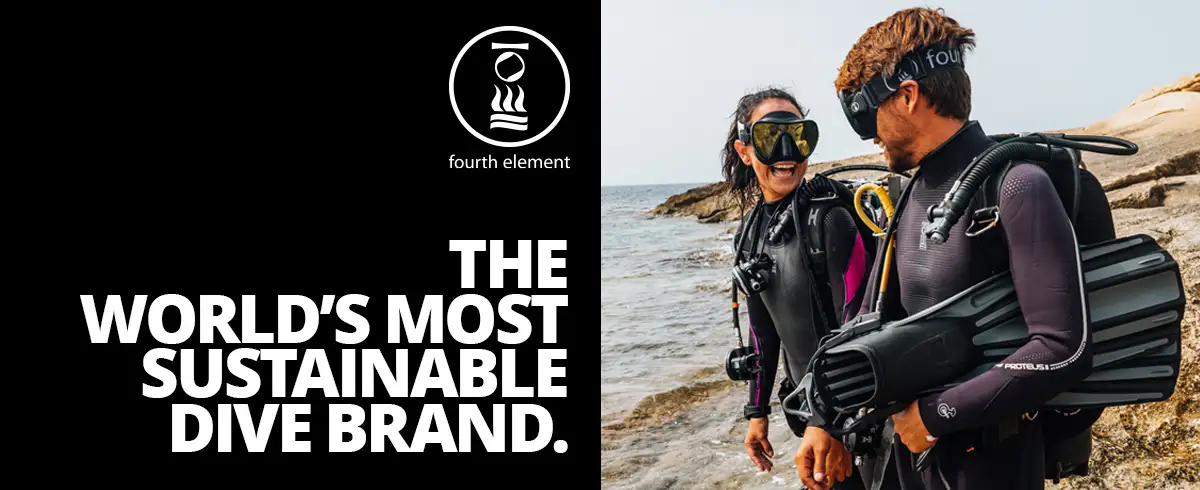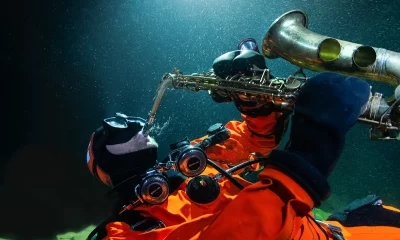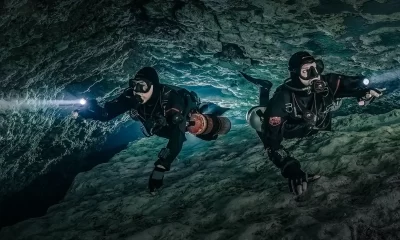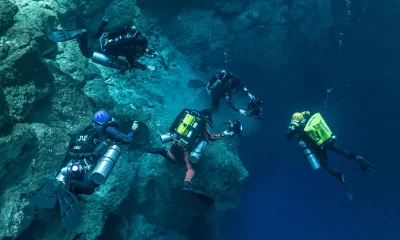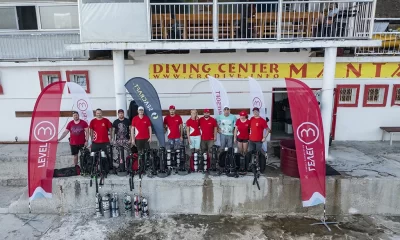Community
Venture Out of Your Comfort Zone
Tech educator and outdoor adventurer Guy Shockey takes us on his personal journey to throw off the shackles of a comfortable, temperature-controlled, well-fed and unchallenged life and periodically “embrace the suck,” i.e., the challenge of learning something new, outside your own comfort zone. He says it not only helps reinforce his wild, happy self, but also helps inform his teaching. “It gives me a better understanding of what my students feel when they are being challenged in some of the most rigorous diving training in the world.” Are you ready to embrace the suck? May the Misogi be with you!
By Guy Shockey. Images courtesy of the author.
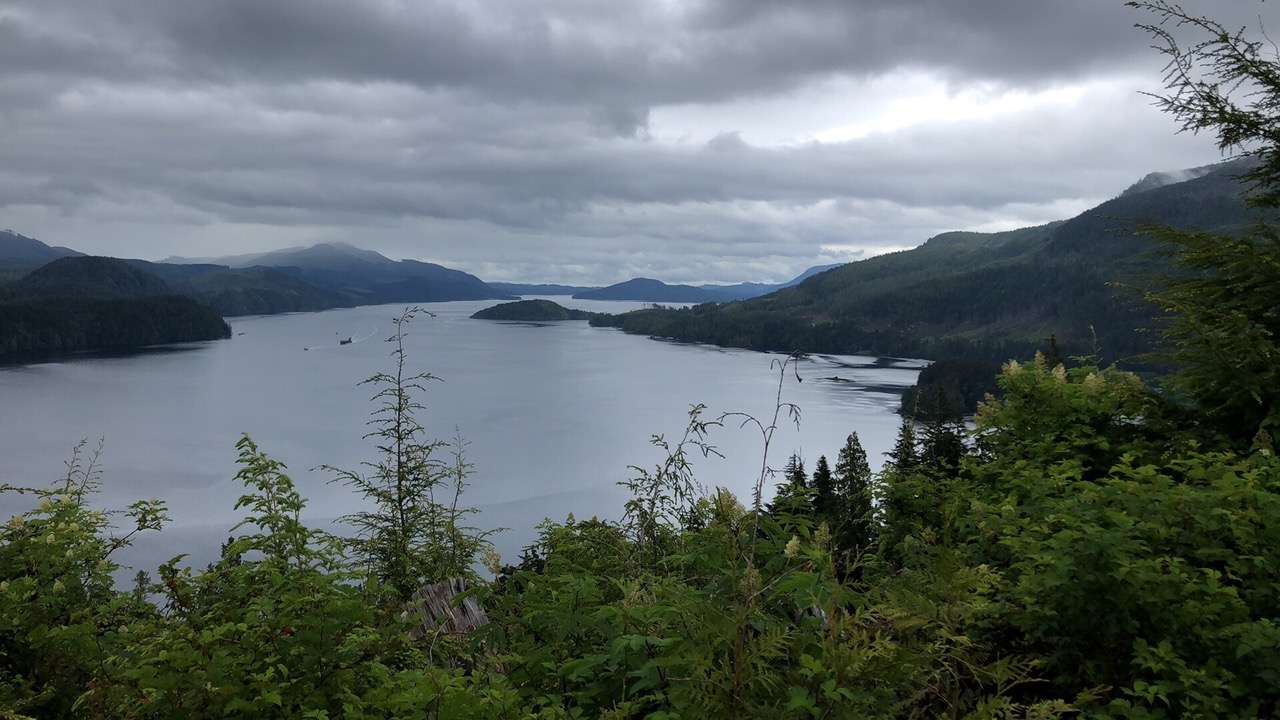
Every so often, a series of unconnected events comes together to create an unexpected synergy leading to something interesting.
The first of these “things” started with several members of our local diving community deciding to climb the tallest mountain on Vancouver Island in the summer of 2024. The Golden Hinde stands at 2,195 m/7,201 ft and was first ascended in 1913. As far as mountain peaks go, it isn’t anything on the scale of mountains in Nepal, the Andes, or even the Rocky Mountains; but what is interesting is that you must do some significant trekking to get to the start of the actual ascent.
On the way there, you must climb up, over and along a ridge that is nearly the height of the mountain itself, and then back down into the valley before you climb the actual mountain! In essence, it’s a two-for-one climb, a roughly 60 km/37 mi trip that we are planning on doing over six days.
The second thing that happened was a discussion with a fellow diver about walking as exercise, and how he had started carrying a backpack with about 14 kg/30 pounds in it on his walks. We discussed how much it increased your heart rate, how he noticed his legs getting stronger and his core tightening up. I have been doing the same thing after becoming bored with just walking.
During the COVID pandemic, there wasn’t a lot we could do with gyms being closed and group sports at a standstill. I bought a bag of cat litter, put the bag in my pack, downloaded some audiobooks and started hiking around the hills near my home with my German Shepherd. During that time, I listened to some good books, and I was in pretty good shape. I have an extensive backpacking history with a lifetime of hunting in mountains all over North America—but that was then, and this is now! 100-pound packs are a thing of the past for me; now I’m all about high speed and low drag…
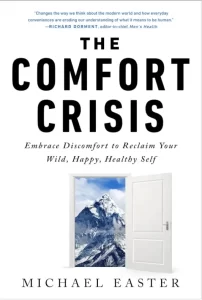
The third thing that happened was a seemingly innocuous book recommendation by a friend: The Comfort Crisis: Embrace Discomfort To Reclaim Your Wild, Happy, Healthy Self by Michael Easter. This New York Times best-selling author is the former fitness director of Men’s Health magazine and is a health and fitness journalist who lives in Las Vegas, Nevada. He also teaches journalism at the University of Nevada in Las Vegas with an emphasis on health media.
The thesis of The Comfort Crisis is that our body benefits from living “on the edge” as our evolutionary ancestors did, and that we have become “…too comfortable living in our sheltered, temperature-controlled, overfed, and underchallenged lives.” He asserts that this is partially to blame for many (if not most) of our urgent physical and mental health issues.
He intertwines some in-depth discussions about health, fitness, diet, and exercise throughout his narrative of his own expedition in the Arctic tundra, hundreds of miles from anywhere, where he stepped entirely out of his own comfort zone and, as a complete rookie, spent a month hunting caribou in the arctic with two friends and minimal equipment and supplies.
Mind the Misogi
This was Easter’s “Misogi” which he discusses at length in his book. Misogi in the traditional sense is a Japanese Shinto practice of ritual purification, but has been adapted to refer to undergoing a challenge that pushes you to your limits and makes you confront your “fears, doubts, and weaknesses”. The idea is that by pushing yourself to your limits, the rest of your life becomes easier in relation to those challenges. In other words, if you can do something very, very hard, and entirely outside of your experience and capacity, then it makes most other things seem “easy” in comparison. Many readers will recognize that this is like Nietzsche’s “what does not kill me makes me stronger” concept, and they wouldn’t be too far off track.
Our climb to the highest peak on the island might not qualify as a Misogi because at the time of this writing we (perhaps foolishly) do not believe it will be challenging enough. Maybe if we said we wanted to run to the top or cut our time in half it might qualify. Here is where this story pivots back to my second point above where we were discussing walking with a weighted pack.
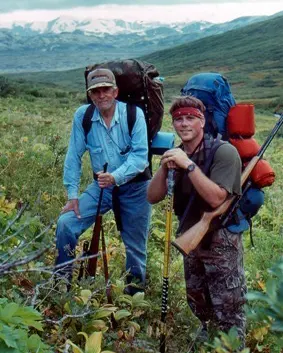
In his book, Easter goes into significant detail about the concept of “Rucking” which, for anyone who has ever spent any time in the military, is a concept we know far too well! Basically, in its simplest form, rucking is hiking with a pack with some weight in it. Just like what I started doing during the pandemic and what my friend and his wife have started doing to get even more benefit from their regular walks. Imagine my surprise when I read Easter’s detailed account of the science behind rucking, and my further astonishment when I discovered it was a real thing that had its own fitness advocates, websites, competitions, and even companies that specialized in rucking gear!
As my brain processed these three, seemingly unrelated events together—the planned hike, the conversation about rucking, and the timeliness of reading Easter’s book—I couldn’t help but see something worth writing about that would be relevant in our world of diving.
Embrace The Suck
Every year, I try something new and outside of my own comfort zone and “Embrace the Suck” to remember what it feels like to be new at something. My view is that I will have a better understanding of what my students feel when they are being challenged in some of the most rigorous diving training in the world. It’s easy to fall into the “Why can’t they understand this?” trap as an instructor, becoming frustrated more easily and potentially burning out as an educator.
I recognize this and push back hard against it: after trying snowboarding, I felt like I couldn’t move for three days (take that one off the “might enjoy it” list); I almost put my hand through a tree during some mountain biking; I made my fingers bleed from playing the guitar so much. But along the way, I found out I really enjoy rock climbing (still a rookie), fell in love with playing music, and (while I hate running) I enjoy rucking! The best part is I was new at most of those things, and these new experiences helped recalibrate my appreciation (and humility) of what it feels like to be new at something. I apply this same concept in the more cerebral world and continue to take classes to try and keep my brain agile and flexible.
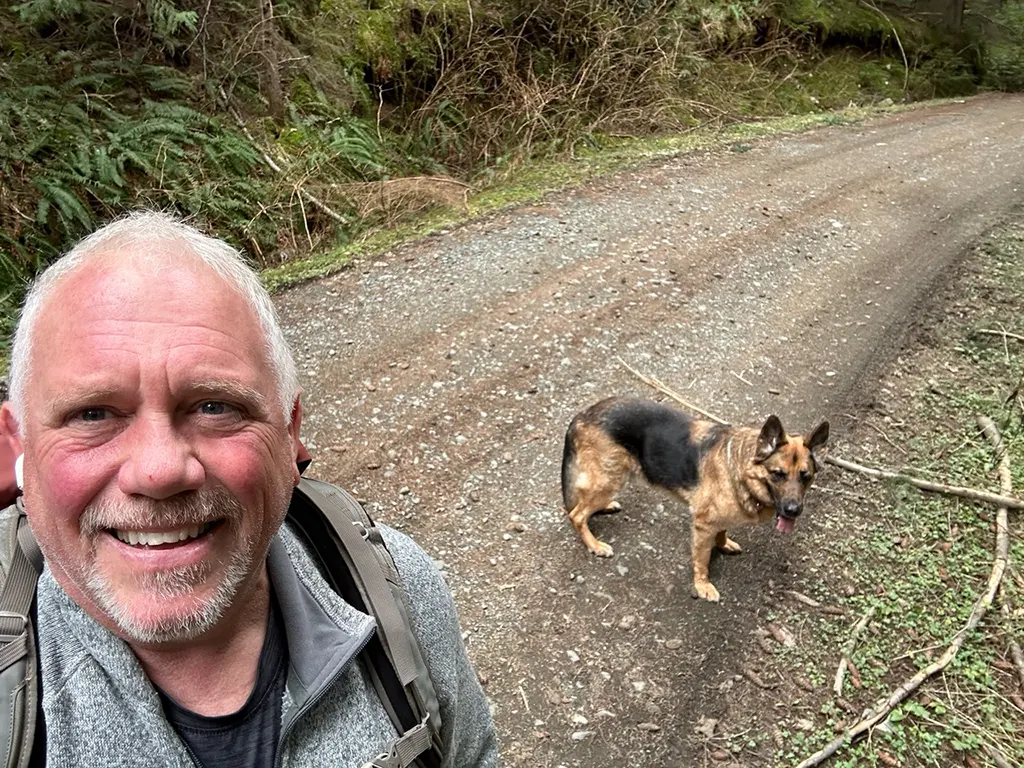
The comparison to divers taking on new challenges with a new class or going on a dive adventure to someplace they haven’t been before is hard to miss. It really is the same thing, and if all the experts in Easter’s book are to be believed (and the evidence is overwhelmingly in support of this) you are building mental and physical resilience in ways that are entirely surprising. I would argue that your own Misogi is a relative concept and the definition of what might be considered extreme is different for each person. Your Misogi may not be my Misogi.
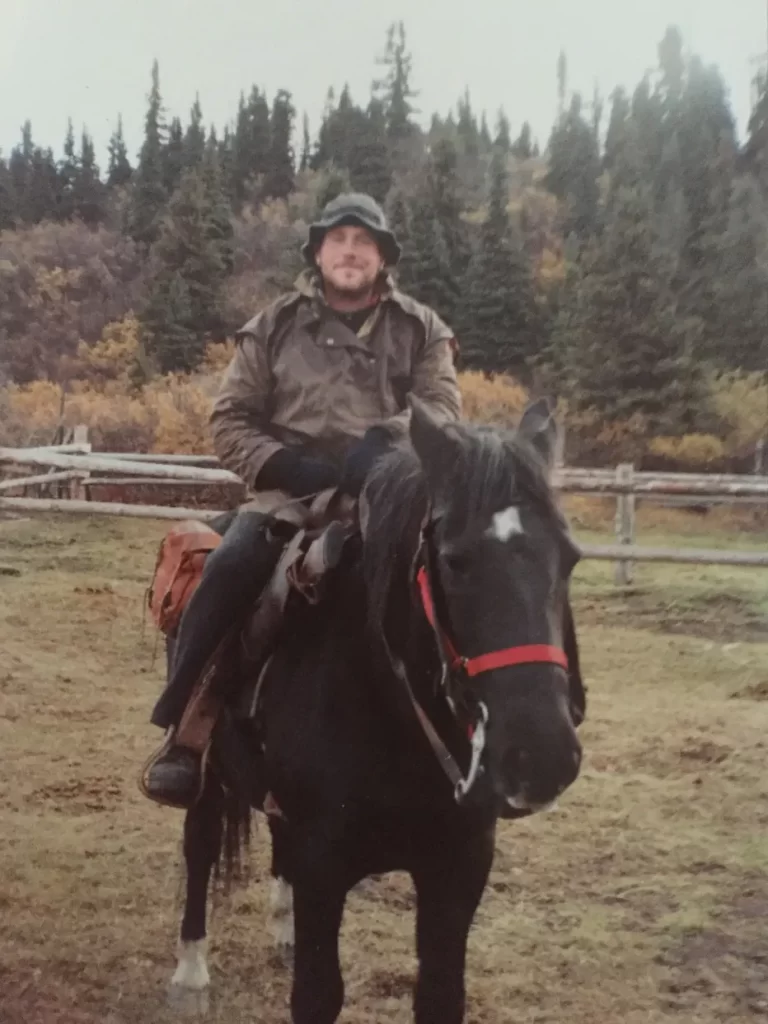
I have many friends who do what I consider extreme things. They seem to share a common personality trait that enables much of their capacity-building: the “just don’t give up” attitude. This ability to stick with something is a skill they developed over umpteen attempts at new things, “embracing the suck,” and being ok with being new at something. In similar ways, I have watched rookie students move on to progressively more difficult training and build confidence and capacity despite their initial misgivings about their abilities. Sometimes this even happens inside a class on a day-by-day basis. I have then watched them take this developed resilience they learned in diving to something in a completely different field.
The kind of diving we engage in has a significant cerebral component to it: we are using our brain to learn new concepts in math, physics, and even biology. While learning physical skills in the water, we are also working to keep our brains engaged. This contributes to maintaining mental flexibility and makes facing new mental challenges easier. Some higher-level classes can even be their own Mental Misogis of a sort!
Embrace The Ruck
But how does rucking play into this whole story? I’m glad you asked! Many people walk; while walking is a great fitness regimen, if you “embrace the ruck” and throw on a pack, you will seriously supercharge your exercise routine. Easter cites multiple sources and studies that show we burn as much as 3x the amount of calories rucking as walking and you can increase this by increasing the weight in your pack and moving from flat to hilly terrain. Long story short, it is an incredible energy burning exercise that doesn’t require a lot of preparation: get a pack, add weight, walk.
In The Comfort Crisis, Easter details many of these studies and it makes for some fascinating reading. I knew that it significantly increased my heart rate, and I knew it must be burning a lot more energy, but I wasn’t aware of just how much. He references one of his friends claiming to lose 16 pounds on a month-long hunt like he did, and I recalled the same thing on a 26-day adventure in the Tatshenshini Mountains north of Haines, Alaska where my cousin and I spent nearly a month in some of the most beautiful wilderness in North America. By the end of that trip, we were regularly hiking over 10 miles a day in some rough country, and I came home 16 pounds lighter but none the worse for wear.
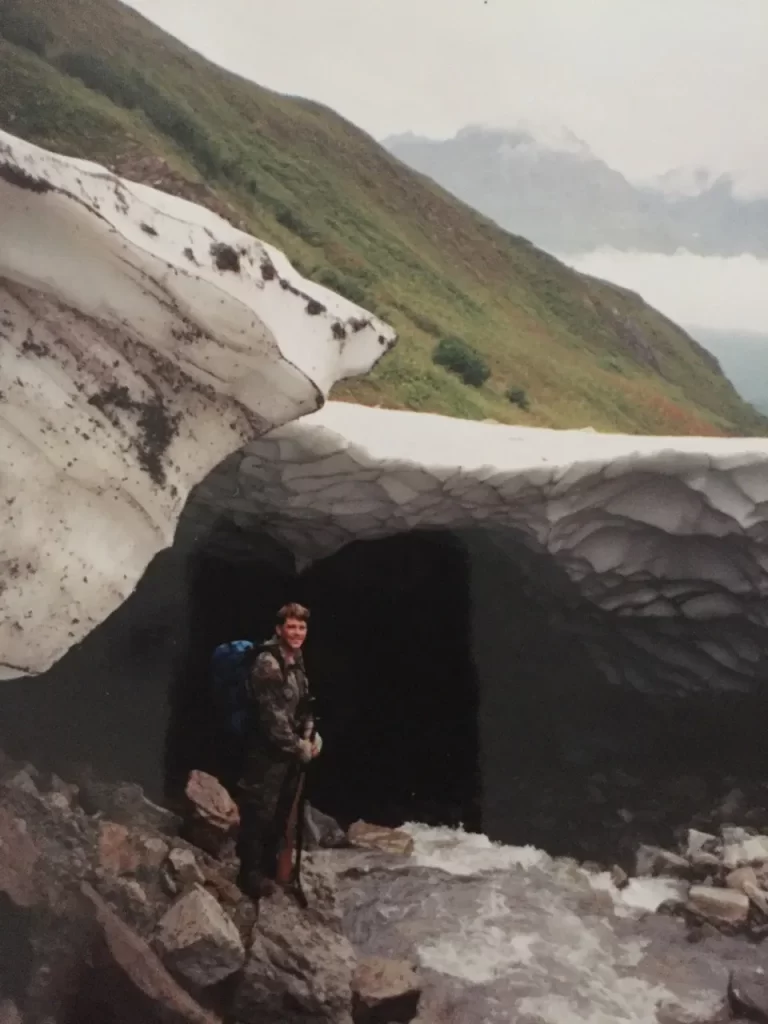
That is one of the best things about rucking: compared to other high-impact fitness activities like running, it is just doing what we have done for thousands of years and, in some places, continue to do. Our bodies are designed to carry loads and rucking is just something we have evolved to do! Of course, no one 10,000 years ago called it rucking… but you get my point. It was just life back then and maybe even done barefoot! It’s also super easy to do as a diver who travels: carry your luggage in a pack, then borrow some weights at the dive center and go for a walk!
As we come full circle, the point of this is that it is healthy to challenge yourself in an area outside of your comfort zone. Maybe you will find something that you can “supercharge” like rucking can do to walking. Maybe you will find your own Misogi in the most unlikely place. The trick is to look for it! But above all else, don’t give up. Challenge yourself every day, week, or year with something new. Dig into doing something and embrace sucking at it. Build mental and physical resiliency and step outside of your comfort zone. Don’t be intimidated by that upcoming dive course: enjoy the experience of learning something new and know that this is how you are meant to learn. You will develop capacities that you never knew you had, and they will carry over to other areas of your life outside of diving (and rucking)!
Maybe this climbing trip might be a Misogi for some of us; it might be for me. I’m not getting any younger, after all, but I won’t be the oldest climber on the trip. What I do know is that it will be a refreshing experience in the wilderness without cell reception, car parks, or landing strips and we will have only what we carry on our backs. It’s not the Arctic tundra, but there isn’t a 7-11 or a Starbucks on the corner either. Maybe this will be a mini-Misogi that will help all of us get out of our comfort zones, partially recalibrate ourselves, and develop more mental and physical resiliency. Oh, and by the way, if things don’t work out, it’s first-come-first-served for all my dive gear…
“If you’re seeing and doing all the same things over and over, your scrapbook looks pretty empty when you take inventory of your life…so we need to do more novel things to start creating more impressions in our scrapbooks, so we don’t feel like the years are flying by. I mean, you remember every single detail of novel, meaningful experiences. You have no chance to forget them the rest of your life.”—Marcus Elliot, as told to Michael Easter in “The Comfort Crisis”
DIVE DEEPER
Other stories by Guy Shockey:
InDEPTH: Keep on Chuukin’ (OCT 2023)
InDEPTH: Why It’s Ok to Make Mistakes (March 2023)
InDEPTH: The Economics of Choosing CCR Vs OC (July 2022)
InDEPTH: How to Become an Explorer: Passion, Partnership, and Exploration (FEB 2022)
InDEPTH: Situational Awareness and Decision Making in Diving (April 2020)

Guy Shockey is a GUE instructor and instructor trainer who is actively involved in mentoring the next generation of GUE divers. He started diving in 1982 in a cold mountain lake in Alberta, Canada. Since then, he has logged somewhere close to 8,000 dives in most of the world’s oceans. He is a passionate technical diver with a particular interest in deeper ocean wreck diving. He is a former military officer and professional hunter with both bachelor’s and master’s degrees in political science. He is also an entrepreneur with several successful startup companies to his credit.

